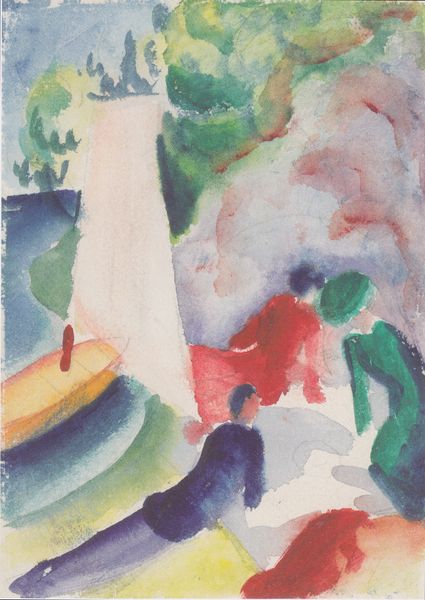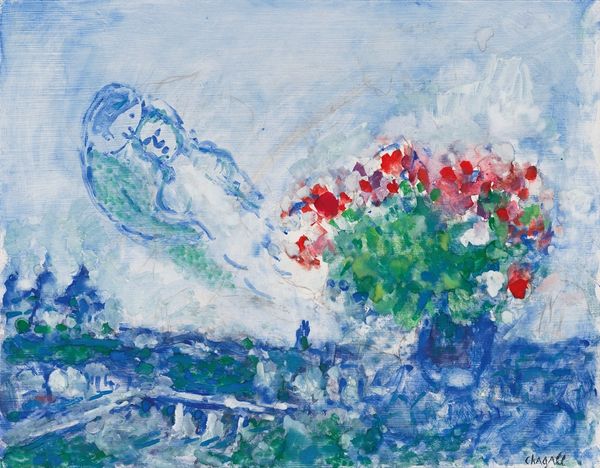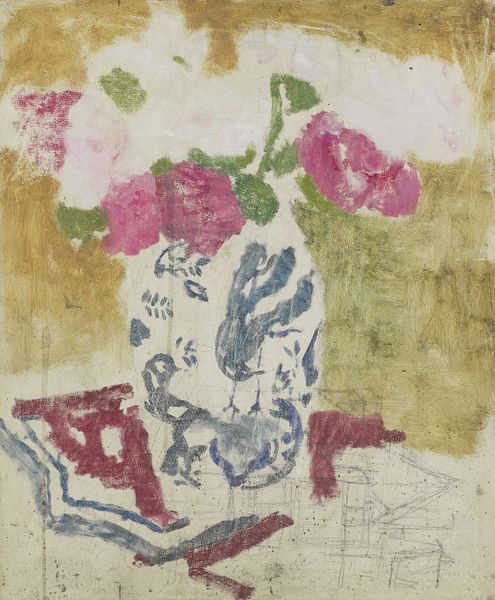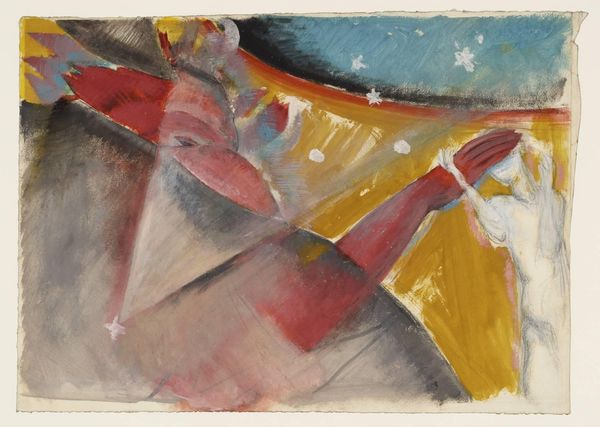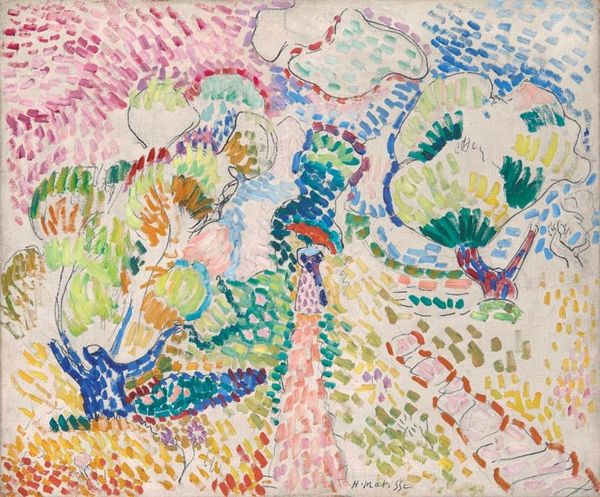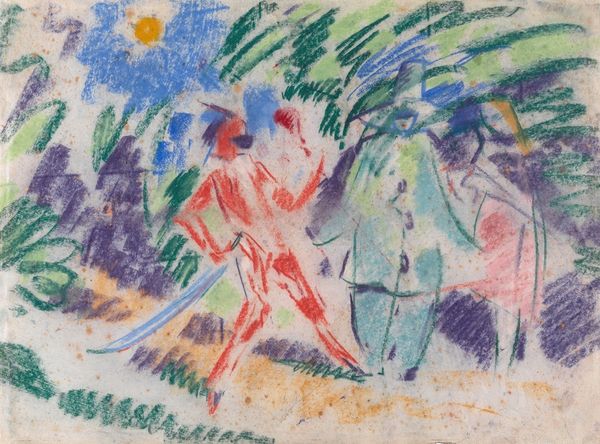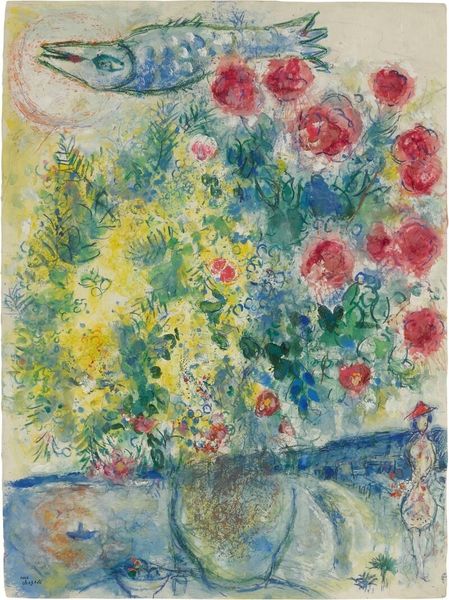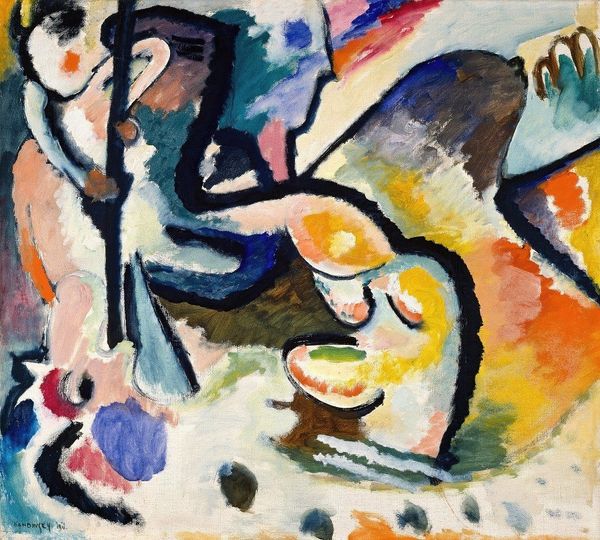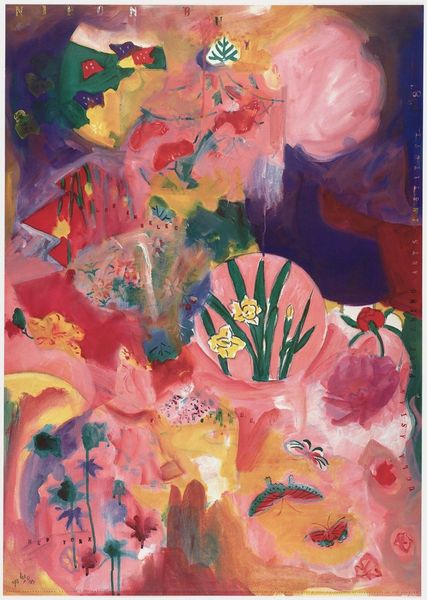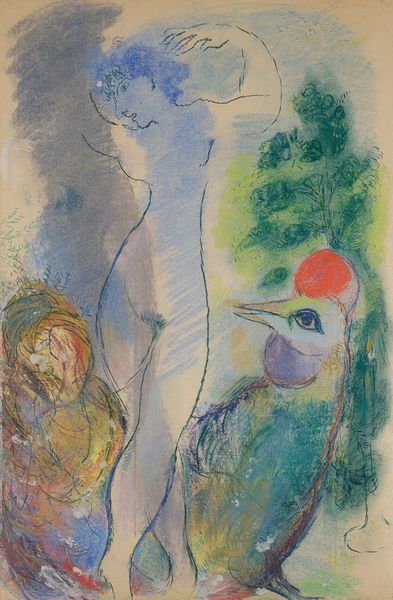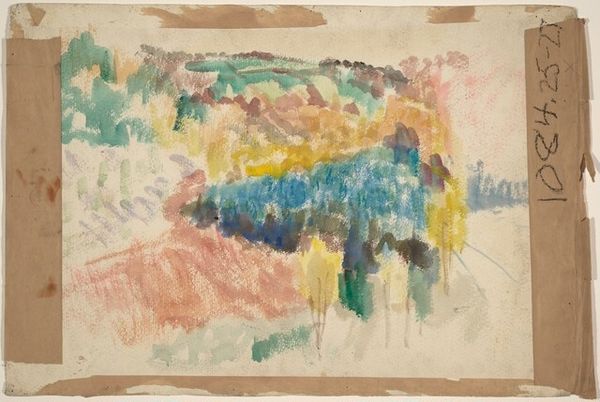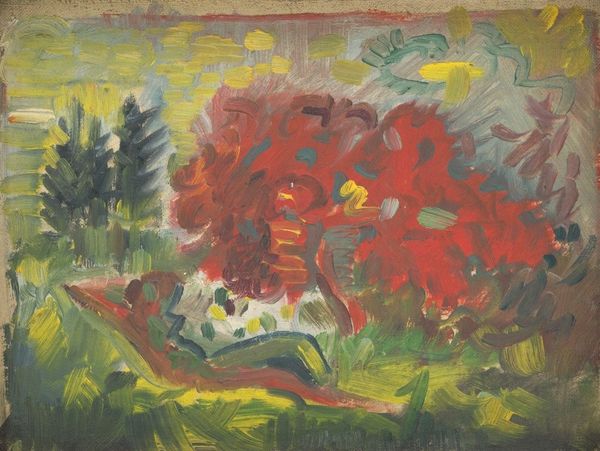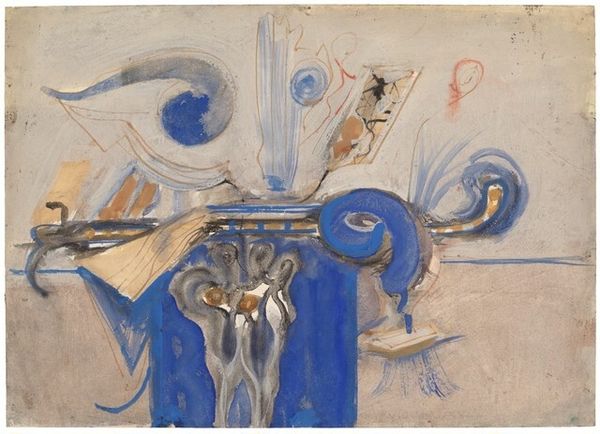
Copyright: Modern Artists: Artvee
Curator: Marc Chagall's watercolor study, “The Carnival: Study for backdrop for Scene II of the ballet Aleko,” painted in 1942, is truly something special. Editor: The immediate sense is one of dreamlike lightness, almost as if floating on the page. The colors are muted, pastel. It feels more like a memory than a solid reality. Curator: Considering it was painted during World War II, this sense of otherworldly escapism feels like a very direct response to the political climate of the time, don't you think? A desire to create an alternate space free from the harsh realities of war. Editor: Absolutely. We see archetypal figures of joy and celebration– a monkey, a floral crown, a musician– but rendered with a fragility that speaks to the precarity of those symbols in the face of immense cultural trauma. Look at the color choices – that bright, slightly surreal pink on the musician figure contrasts starkly with the almost washed-out tones surrounding it. Curator: That's interesting. Chagall, with his Jewish heritage, was of course directly impacted by the war. We might see this painting as an intersection of his personal experience with broader historical events. His recurring motifs of folklore, love, and nostalgia became powerful acts of resistance against a world that was actively trying to erase those values. The whimsical subject matter stands in defiance to the destruction happening in the world. Editor: And it speaks to a hope for continuity. The carnival, the performing musician, these are deeply embedded in our collective cultural memory. They point towards a desire to keep traditions alive. Curator: Precisely, and it is important to situate his use of folkloric images, as rooted in resistance, against the backdrop of the Second World War, especially given his cultural identity, which brings this art piece closer to conversations of displaced populations that are happening today. Editor: It’s a potent reminder that art can function as both an escape and a form of resistance, preserving meaning across difficult times. Curator: Definitely. Studying this piece makes one aware of the complex interplay between historical forces and artistic intention. Editor: Indeed. It is always powerful to engage with an artwork on many levels, revealing ever more layers of interpretation, both intellectual and intuitive.
Comments
No comments
Be the first to comment and join the conversation on the ultimate creative platform.
